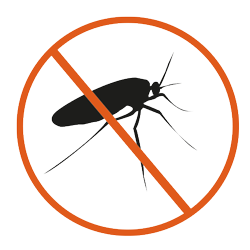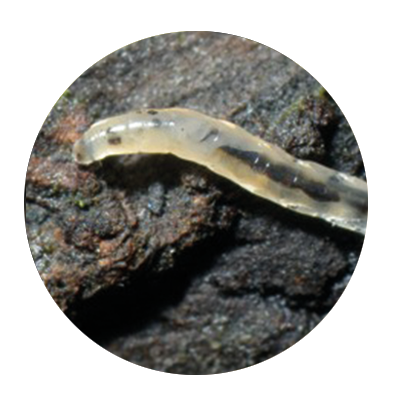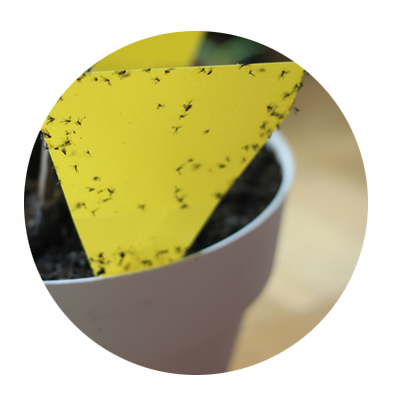Potting soil flies - Moisture control

Definition

Sciarid adults are small black flies of about 3 mm to 4 mm in length.
Sciarid flies (family of mycetophiles and sciaridae) are a plant pest, especially in indoor cultivation because the humidity level is higher than in outdoor cultivation.
The larvae of soil flies are the real danger for your indoor plants.
Proliferation of sciarids

Proliferation in number of days - Soil temperature : 20-24°C
You will usually find them in closed growing areas such as greenhousesyou will usually find them in closed growing areas such as vegetable gardens with domes, unventilated indoor growing boxes, and potted plants because they are attracted to moisture, heat, decaying organic matter and compost.
Humus-rich and moist growing substrates (potting soils) provide an ideal habitat for their white, legless, worm-like larvae. The larvae feed on organic matter and the soft parts of the plant buried in the soil, i.e. the root system and the stem.
Plants in full growth are therefore more invaded by sciarids.
They are usually detected when adults fly around indoor plants, near windows or on substrates. Beware the adult females once mated with males can lay 50 to 300 eggs. In 6 weeks, the egg turns into a larva, then a white to brown pupa, and finally a fly. The entire life cycle from egg to adult can be completed in as little as 3 to 4 weeks, depending on the weather.
The life expectancy of a fly is one week.
Because of their propensity and relatively short gestation period, potted plants can host several generations in different stages at the same time: egg, larva, pupa, adult. For this reason, remedies require several applications to eliminate all eggs.
So much so that these potting flies are very invasive.
Symptoms

Symptoms of sciarid infestation in a plant include sudden wilting, loss of vigor, stunted growth and yellowing. If the infestation is severe, you may lose a lot of young shoots because the potting flies love young plants.
Inspect plants thoroughly for signs of pests before you buy them. Gently turn the soil near the base of the plant and check for clear, glowing larvae. Reject any plant from which flying sciarids escape.
How to control potting flies?

It is necessary to allow a better air circulation above the substrate (fanaeration of the greenhouse, extraction-intraction) and appropriate watering. Indeed, the substrate must dry quickly after watering, and your pot must be well ventilated. The bottom of the pot must be pierced in order to evacuate the water not necessary for the plant. Watering should be neither too high nor too low.
Also consider adding clay balls or sand to the surface. Don't let water accumulate in the saucer under the pot and don't overwater, even if the plant can handle it.
This will prevent the appearance of sciarids.
If the pests are already present, let the substrate dry out one to two inches between waterings. This kills the larvae and prevents egg development, as well as making the substrate less attractive to egg-laying females.
Use yellow sticky traps horizontally on the substrate to capture large numbers of laying adults. Sciarids are attracted to the yellow color and remain trapped before they can lay their eggs.
Sciarids thrive in soaked soils. In winter, watering should be reduced as the temperature allows for more evaporation of water.
When potting, avoid using water containing organic matter such as algae, as this could multiply egg laying.
If your potting soil is too infected, do not hesitate to empty the substrate, throw it away, then rinse the roots and repot the plant in a healthy potting soil.
Biological control
Beneficial nematodes placed on the substrate will be able to destroy larvae, because these earthworms penetrate the sciarid larva, and release a bacterium inside. They do not harm earthworms, they also attack other pests such as fleas and are long lasting. They are safe to use around animals, other plants and family members.
Some essential oils are also very effective.
